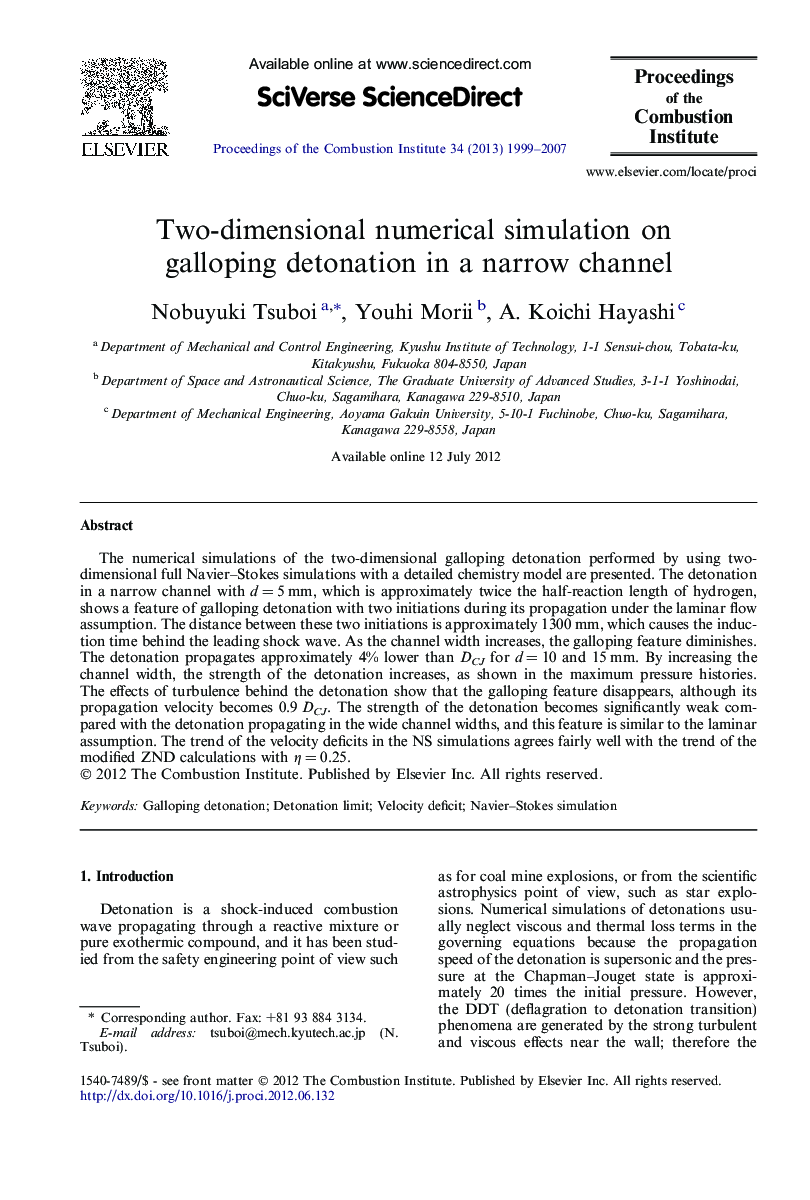| Article ID | Journal | Published Year | Pages | File Type |
|---|---|---|---|---|
| 240821 | Proceedings of the Combustion Institute | 2007 | 9 Pages |
The numerical simulations of the two-dimensional galloping detonation performed by using two-dimensional full Navier–Stokes simulations with a detailed chemistry model are presented. The detonation in a narrow channel with d = 5 mm, which is approximately twice the half-reaction length of hydrogen, shows a feature of galloping detonation with two initiations during its propagation under the laminar flow assumption. The distance between these two initiations is approximately 1300 mm, which causes the induction time behind the leading shock wave. As the channel width increases, the galloping feature diminishes. The detonation propagates approximately 4% lower than DCJ for d = 10 and 15 mm. By increasing the channel width, the strength of the detonation increases, as shown in the maximum pressure histories. The effects of turbulence behind the detonation show that the galloping feature disappears, although its propagation velocity becomes 0.9 DCJ. The strength of the detonation becomes significantly weak compared with the detonation propagating in the wide channel widths, and this feature is similar to the laminar assumption. The trend of the velocity deficits in the NS simulations agrees fairly well with the trend of the modified ZND calculations with η = 0.25.
